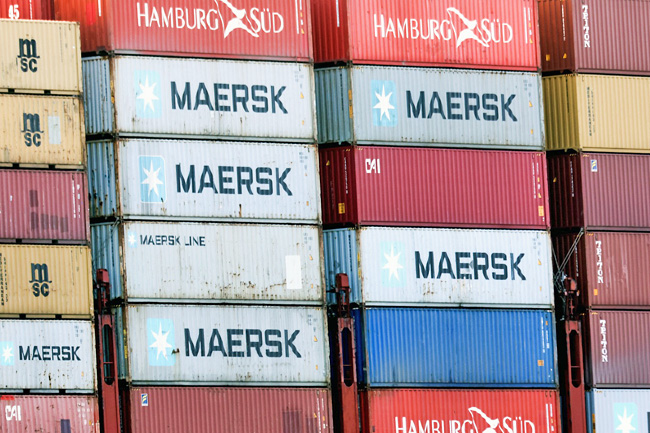AFP – Danish shipping giant Maersk reported a big jump in its annual net profit yesterday, propelled by freight prices that shot up.
The group posted strong earnings despite having to take longer routes around southern Africa to avoid the key Red Sea shipping lane.
It posted a net profit of USD6.1 billion for 2024, up 60 per cent from the previous year.
The company said in its annual report that 2024 was the “third-best year in Maersk’s history”.
Maersk had “anticipated a challenging year” in 2024, Chairman Robert Maersk Uggla and Chief Executive Vincent Clerc said in a joint statement.

The attacks caused “unacceptable safety risks for crew and cargo along a critical trade route. Initially uncertain in duration, the crisis persisted throughout the year, underlining the vulnerabilities of global supply chains”, they said. “Increased freight rates driven by the situation in the Red Sea, combined with our ability to capitalise on higher-than-expected demand, strong operational execution and cost discipline, led us to repeatedly raise expectations throughout the year,” the statement said.
The group ultimately delivered “results significantly above initial guidance”.
Maersk expects to resume Red Sea traffic between the middle and the end of this year.
Its 2024 profit before depreciation, amortisation and impairment losses reached USD12.1 billion.
Revenue rose eight per cent to USD55.5 billion – higher than the USD54.8 billion forecast by analysts surveyed by Bloomberg.
The global container market “went through a robust recovery” last year, estimated at seven per cent, Maersk said.
“Export growth out of China was the ultimate growth driver in 2024,” it said.
The Chinese share of global exports is estimated to have increased to 36 per cent last year, compared to 32 per cent before the COVID pandemic in 2019, while those of Europe and North America have declined, the company said.
“The reason for this development is overcapacity in the Chinese manufacturing sector,” Maersk said.
Maersk said it expects an underlying profit of between USD6 billion and USD9 billion for 2025.






